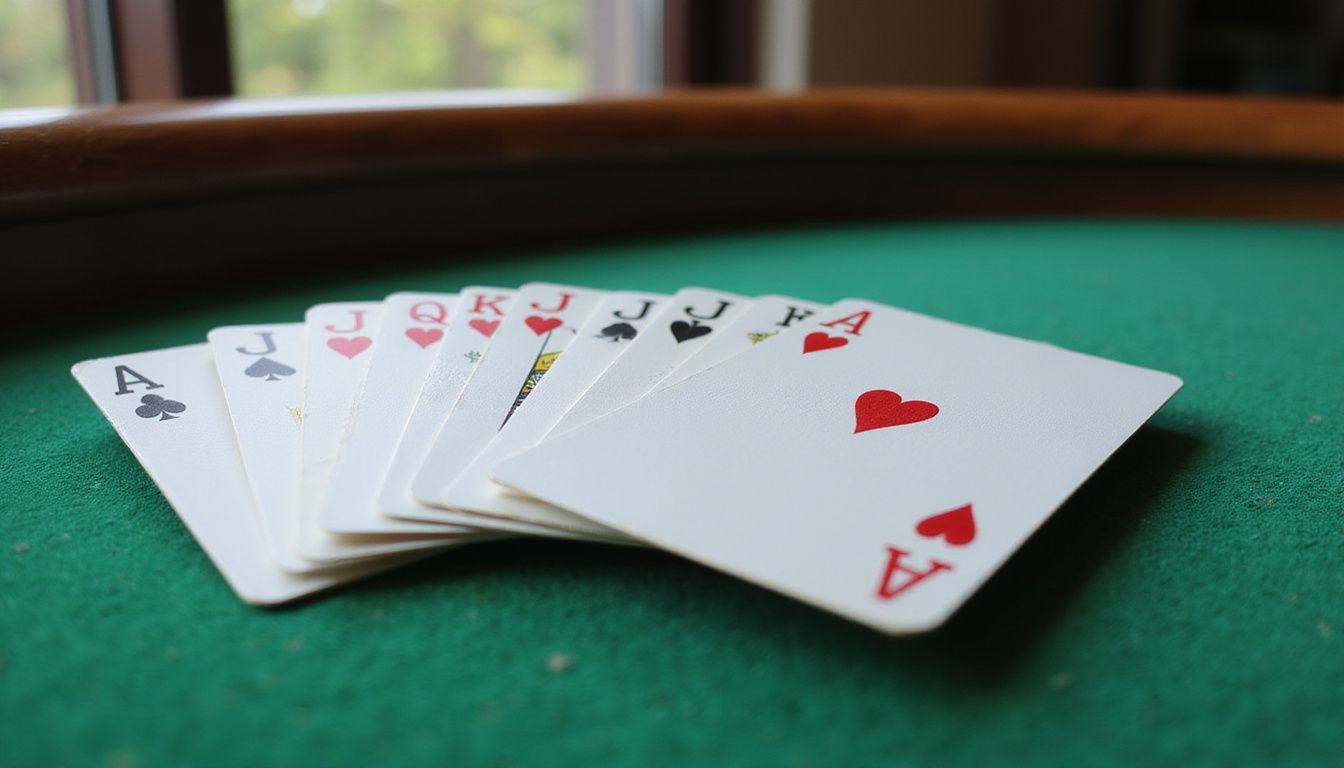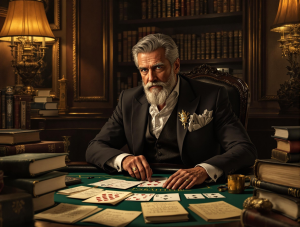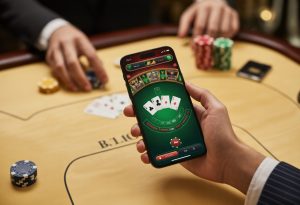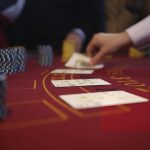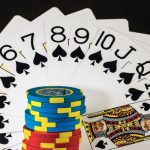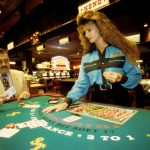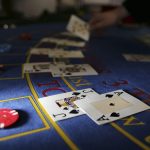Many blackjack players struggle to find versions that offer real advantages at the table. Double exposure blackjack stands out because both dealer cards are shown face-up from the start.
This unique double exposure blackjack guide will teach you how to adjust your play when you can see what the dealer holds. Learn the special rules, master the right moves, and boost your chances of winning this exciting casino game.
What is Double Exposure Blackjack?
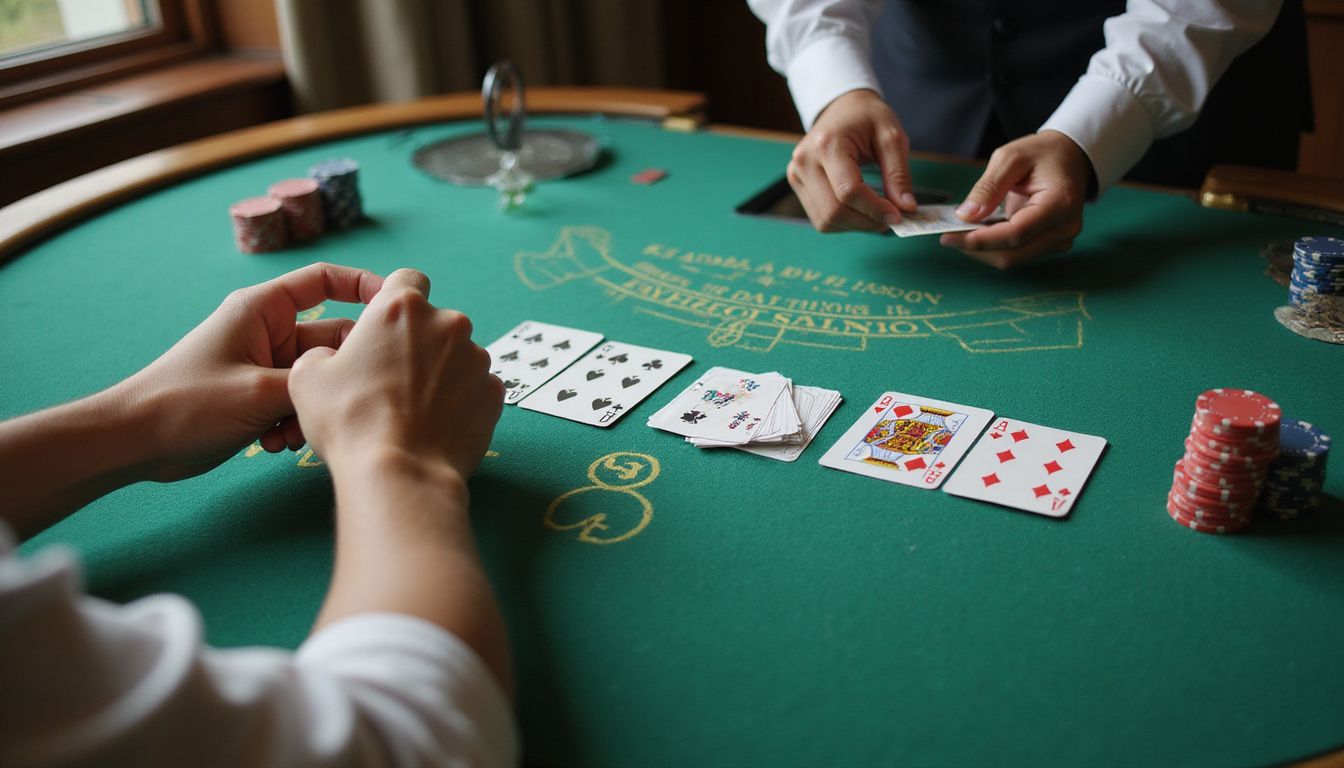
Double Exposure Blackjack stands out from other casino games by showing both dealer cards face up. This unique feature gives players a rare advantage since they can see the dealer’s complete hand from the start.
The casino balances this edge with several rule changes that favor the house. Players lose all ties instead of pushing, and natural blackjacks pay only 1:1 instead of the standard 3:2 found in classic blackjack.
The game also limits when you can double down and restricts splitting options for aces and ten-value cards.
Knowledge is power in blackjack, but in Double Exposure, that power comes with a price.
Basic strategy for this variant differs greatly from traditional blackjack. You must hit on hands of 11 or lower, and sometimes hit even when the dealer shows weak cards like 14, 15, or 16.
The house edge shifts because you can make decisions based on both dealer cards rather than just one. Players need to learn specific tactics for hard hands, soft hands, and pair splitting to maximize their chances against these altered rules.
The key differences in Double Exposure Blackjack create a fresh challenge for card game enthusiasts looking beyond standard table games.
Key Differences Between Double Exposure and Classic Blackjack
Double Exposure Blackjack flips the script on traditional blackjack by changing core rules that affect your winning odds. These changes create a unique game that requires players to adapt their strategy for success.
Dealer’s cards are dealt face-up
In Double Exposure Blackjack, both dealer cards appear face-up on the table from the start of each hand. This major difference gives players a huge advantage by removing all guesswork about the dealer’s position.
You can see exactly what you’re up against and make better decisions based on complete information. The casino balances this player benefit with other rule changes that favor the house.
Most standard blackjack games only reveal one dealer card, forcing players to guess the hidden card’s value when making choices. The exposed cards in this variant create a unique strategic approach that differs from traditional blackjack methods.
The face-up dealer cards change your basic strategy completely. For example, if you see the dealer has a weak total like 14, 15, or 16, you’ll play your hand differently than in regular blackjack.
You might stand on lower totals when you can see the dealer will likely bust. This transparency eliminates the normal uncertainty but requires learning new strategy charts specifically for Double Exposure games.
The house edge adjusts through rules like ties going to the dealer and natural blackjacks paying only even money (1:1) instead of the standard 3:2 payout.
Ties result in a dealer win
While seeing both dealer cards gives players a major edge, Double Exposure Blackjack balances this advantage with several rule changes. One key difference involves ties. Unlike standard blackjack where tied hands result in a push (you get your bet back), Double Exposure rules give all ties to the dealer.
This rule significantly impacts your strategy and the house edge.
The house wins all ties in Double Exposure Blackjack – a critical rule that shifts the odds back in the casino’s favor.
This dealer-wins-ties rule directly offsets the player advantage gained from seeing both dealer cards. The casino needs this edge to make the game profitable for them. Combined with the reduced 1:1 payout for natural blackjacks (instead of the standard 3:2), these rule changes require players to adjust their basic strategy.
You must play more aggressively in certain spots to overcome these house-favoring rules.
Blackjack pays 1:1
Standard blackjack games typically reward players with a 3:2 payout for a natural blackjack. Double Exposure changes this rule significantly. Players only receive an even money payout (1:1) for their blackjacks in this variant.
This rule adjustment helps balance the game in the casino’s favor since you can see both dealer cards. The reduced payout for natural blackjacks cuts into your potential profits and increases the house edge compared to traditional blackjack games.
This 1:1 payout rule exists as a trade-off for the advantage of seeing the dealer’s complete hand. The casino needs to protect its edge somehow, and reducing the blackjack payout serves this purpose effectively.
Many players find this rule change worth accepting because the knowledge gained from seeing both dealer cards often outweighs the reduced payout. Your strategy must adapt to this reality by focusing less on hitting natural blackjacks and more on making optimal decisions based on the dealer’s exposed cards.
Double Exposure Blackjack Rules Overview
Double Exposure Blackjack comes with specific rules that change how you play compared to standard blackjack – learn these key differences to boost your chances at the tables.
Limited double-down options
Double Exposure Blackjack limits your doubling down options compared to classic blackjack. Most casinos only allow players to double down on hard totals of 9, 10, or 11. This rule change helps balance the game since you can see both dealer cards.
I played at the Bellagio last month and noticed this restriction immediately affected my betting strategy. The house edge increases because you can’t double down on soft hands or other promising situations.
Some online casinos might offer slightly different rules, but the limited double-down options remain a standard feature. These restrictions require special attention when applying basic strategy to your gameplay.
Players must adjust their betting patterns accordingly and be more selective about when to increase their wagers during hands.
Split restrictions for aces and 10-value cards
Beyond limited double-down rules, Double Exposure Blackjack also places strict limits on splitting cards. Most casinos ban splitting aces completely in this variant. This rule exists because splitting aces creates strong potential hands, which would give players too much advantage when dealer cards are exposed.
The house needs these restrictions to balance the game.
Face cards and 10s face similar splitting limits. Players often cannot split 10-value cards of different types (like a King and Queen). Some casinos forbid splitting 10-value cards entirely.
These split restrictions help maintain the house edge in Double Exposure Blackjack, which sits at about 0.69% with perfect basic strategy play. The split rules might seem tough, but they offset the major player benefit of seeing both dealer cards from the start.
No surrender option available
Unlike standard blackjack games where players can split aces and 10-value cards with few limits, Double Exposure Blackjack takes away another key player option. The surrender move doesn’t exist in this variant.
Players cannot fold their hand and recover half their bet when facing tough odds against the dealer’s exposed cards.
This missing surrender option further tilts the house edge in the casino’s favor. Most blackjack games let you cut losses by surrendering bad hands, especially against dealer aces or face cards.
I’ve played Double Exposure tables where this limitation forced me to play through terrible hands I would normally abandon. The lack of surrender, combined with ties going to the dealer and the even money payout for natural blackjacks, creates a unique strategic challenge that requires strict basic strategy adherence.
Basic Strategy for Double Exposure Blackjack
Basic strategy for Double Exposure Blackjack changes because you can see both dealer cards. You need a special chart for this game since standard blackjack moves won’t work the same way.
Hard hand strategy tips
Hard hands in Double Exposure Blackjack need special attention since you can see both dealer cards. Your decisions must adapt to this unique advantage while accounting for the rule changes that favor the house.
- Always hit on hard 11 or lower regardless of what the dealer shows. This basic move maximizes your chances against any dealer combination.
- Stand on hard 12 when the dealer shows a bust hand (22 or higher). You’ll win automatically in this situation.
- Hit your hard 13-16 hands if the dealer shows 17 or higher. The exposed cards tell you exactly what you’re up against.
- Double down on hard 9-11 only against dealer hands of 13-16. The rules limit double-down options, so choose these spots carefully.
- Stand with hard 17 or higher against any dealer hand. The house edge makes aggressive play with strong hands too risky.
- Hit hard 12-16 against dealer 17-21. Seeing both dealer cards means you know when you need to take another card.
- Avoid splitting 10-value cards even when the dealer shows weak cards. The even money payout for blackjack makes this play less valuable.
- Take advantage of dealer 14-16 hands by standing on your hard 12 or higher. These dealer hands have high bust potential.
- Adjust your play based on the specific casino rules about ties. Since ties lose to the dealer, you must play more conservatively in some situations.
- Track the cards if allowed by the casino. Card counting works differently in double exposure games but can still provide player advantage.
Soft hand strategy tips
Soft hands in Double Exposure Blackjack require special attention since you can see both dealer cards. Playing these hands correctly can reduce the house edge and improve your chances of winning at this casino game.
- Always hit soft 13 through soft 17 when the dealer shows 7 or higher total. Seeing both dealer cards gives you a clear advantage in making this decision.
- Stand on soft 18 if the dealer’s exposed cards total 13 through 18. The dealer must hit these totals and has a good chance of busting.
- Hit soft 18 if the dealer shows a total of 9 or less, or 19 or more. Your chance to improve your hand outweighs the risk of busting.
- Double down on soft 13 through soft 18 when the dealer shows a weak total of 4, 5, or 6. This strategy takes advantage of the dealer’s poor position.
- Never split aces in Double Exposure Blackjack. The 1:1 payout for natural blackjack makes this move less profitable than in classic blackjack.
- Stand on soft 19 or higher against any dealer hand. These strong hands already have high value and risk busting if you hit.
- Soft hands offer more flexibility since an Ace can count as 1 or 11. Use this to your advantage when deciding whether to hit or stand.
- Hit soft 19 only if the dealer shows a 20 or 21. In this rare case, you need to improve your hand to have any chance of winning.
When to split pairs effectively
Splitting pairs in Double Exposure Blackjack requires special attention since you can see both dealer cards. Your decision to split should focus on maximizing your advantage while considering the unique rules of this game variant.
- Split 8s against any dealer hand except when the dealer shows 20, as two hands starting with 8 give you better winning chances than playing one hand of 16.
- Never split 10s or face cards in Double Exposure Blackjack, even when the dealer has a weak hand, as a hand of 20 is already strong.
- Split Aces against dealer hands of 2 through 9, but keep them together if the dealer shows 10 through Ace.
- Split 9s when the dealer shows cards totaling 2 through 9, 12, or 13, as you’ll have a good chance to make strong hands.
- Split 7s when the dealer shows hands totaling 2 through 7, as you can improve both hands against these weaker dealer starts.
- Split 6s against dealer hands of 2 through 6, but hit when the dealer has stronger cards.
- Split 4s only when the dealer shows a 5 or 6, as these specific dealer cards give you the best chance to win both hands.
- Split 3s and 2s against dealer hands of 2 through 7, as you can improve these low pairs against weaker dealer cards.
- Avoid splitting pairs when the dealer shows a natural blackjack, as you’ll lose both bets instead of just one.
- Split restrictions may apply to Aces in Double Exposure Blackjack, which affects your basic strategy decisions.
Now let’s examine the specific bankroll management techniques that can help you maintain your edge in this unique blackjack variant.
Tips for Winning at Double Exposure Blackjack
Smart bankroll management can make or break your Double Exposure Blackjack experience. You need specific tactics to win this unique game where you see both dealer cards.
Bankroll management
Smart bankroll control stands as your best defense in Double Exposure Blackjack. I set aside a fixed amount of money just for playing this unique variant where both dealer cards appear face-up.
My rule is simple: never bet more than 5% of my total funds on a single hand. This approach helps me stay in the game longer, even during losing streaks. The house edge increases because ties go to the dealer and natural blackjacks pay only 1:1 instead of the standard 3:2.
These rule changes demand stricter money management than regular blackjack games.
Players should create clear limits before sitting at the table. I establish both win goals and loss limits for each session. Once I hit either mark, I walk away. This discipline prevents the common mistake of chasing losses or getting greedy after wins.
Your cash reserves need extra protection in Double Exposure Blackjack since the casino takes all ties. This rule alone significantly impacts your playing time and requires more careful betting strategies than other card games.
Avoiding common mistakes
Players often make costly errors in Double Exposure Blackjack that eat into their bankroll. These mistakes can be avoided with proper knowledge and discipline.
- Taking insurance bets despite seeing both dealer cards is a waste of money in double exposure blackjack.
- Many players forget that ties lose to the dealer, leading them to stand when they should hit.
- Playing with the same basic strategy as classic blackjack will increase the house edge against you.
- Failing to adjust your betting strategy for the even money payout on natural blackjack costs players significant profits.
- Doubling down too often without considering the exposed dealer cards wastes valuable betting opportunities.
- Not splitting pairs according to double exposure rules limits your chances of winning multiple hands.
- Players often miss chances to hit against dealer hands of 14, 15, or 16 that would be automatic stands in regular blackjack.
- Ignoring bankroll management leads to quick losses since the game has unique betting requirements.
- Many gamblers fail to check the specific casino rules for double exposure blackjack before playing.
- Card counting works differently with exposed dealer cards, so using standard counting systems will yield poor results.
Conclusion
Double Exposure Blackjack offers a unique twist on the classic game with its face-up dealer cards. This version demands a different approach to strategy since you can see what the dealer holds.
Your success hinges on mastering the special rules about ties, blackjack payouts, and splitting restrictions. Learning the right moves for hard hands, soft hands, and pairs will slash the house edge in your favor.
Armed with proper bankroll control and the tips from this guide, you can now tackle Double Exposure Blackjack with greater confidence at any casino.
FAQs
1. What is Double Exposure Blackjack and how does it differ from regular blackjack?
Double Exposure Blackjack is a casino game where both dealer cards are exposed to players, unlike traditional blackjack where only one dealer card is visible. This player advantage is balanced by other rule changes like ties lose to the dealer and natural blackjack pays even money instead of 3:2.
2. What is the house edge in Double Exposure Blackjack?
The house edge in Double Exposure Blackjack typically ranges from 0.5% to 0.8% when using proper basic strategy. Though seeing both dealer cards helps players, the adjusted rules prevent the house edge from favoring players too much.
3. Can I split aces in Double Exposure Blackjack?
Most Double Exposure Blackjack variations allow splitting aces, but you’ll usually get only one card per ace. Rules for doubling down after splits vary by casino, so check the specific table rules before playing.
4. Is card counting effective in Double Exposure Blackjack?
Card counting can work in Double Exposure Blackjack but offers less advantage than in standard versions. Since both dealer cards are visible, the counting strategy must be adjusted for this unique game format.
5. Where can I play Double Exposure Blackjack?
You can find Double Exposure Blackjack at select land-based casinos and many online blackjack sites. This variant isn’t as common as traditional blackjack, but it’s more widely available than specialty games like certain scratch cards or unique table games.

